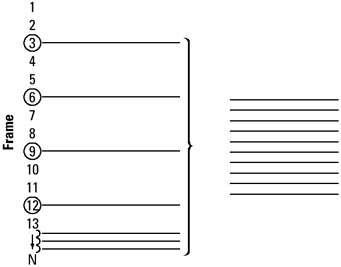Tool 173: Sampling Methods
| AKA | Simple Random Sampling, Systematic Sampling, Stratified Sampling, Cluster Sampling |
| Classification | Data Collecting (DC) |
Tool description
The sampling methods provide teams with the ability to identify and collect sufficient data from targeted populations or processes in order to determine the state of quality, customer perception, or opinion on some issue with reasonable confidence in the results measured. Other considerations for sampling rather than taking the whole population are the savings in cost and time, the impossibility of reaching or checking every member of a population, and the proven adequcy of the different sampling methods for most research applications.
Typical application
-
To collect sample data that is considered representative of the population under observation.
-
To estimate the number and distribution of failures, defects, or complaints over a specified period of time.
-
To uncover problems or customer dissatisfaction through the application or appropriate sampling methods.
-
To obtain answers to research questions or to validate prior research findings.
Problem-solving phase
| Select and define problem or opportunity | |
| → | Identify and analyze causes or potential change |
| Develop and plan possible solutions or change | |
| → | Implement and evaluate solution or change |
| → | Measure and report solution or change results |
| Recognize and reward team efforts |
Typically used by
| 1 | Research/statistics |
| Creativity/innovation | |
| Engineering | |
| 3 | Project management |
| Manufacturing | |
| 5 | Marketing/sales |
| Administration/documentation | |
| Servicing/support | |
| 2 | Customer/quality metrics |
| 4 | Change management |
before
-
Data Collection Strategy
-
Audience Analysis
-
Demographic Analysis
-
Consensus Decision Making
-
Multivoting
after
-
Interview Technique
-
Surveying
-
Random Numbers Generator
-
Observation
-
Questionnaires
Notes and key points
-
Also refer to tool 158, random numbers generator, in this handbook.
-
Refer to textbooks on statistics for additional and more detailed information on the various sampling methods.
Step-by-step procedure
-
STEP 1 Define the population to be sampled. Determine the size, strata or make-up, location, and general characteristics. This step is important in that it will suggest a particular sampling method to be used by the researcher. See example Illustration of the Most Frequently Used Sampling Methods.
-
STEP 2 Determine the sample size. Reference should be made to a sample size determination table found in most textbooks on statistics. The proper sample size assists in ensuring a high degree of validity in the research process.
-
STEP 3 Select a representative sample from the targeted population. The most common sampling methods are:
-
Simple Random Sampling Every member of the population has an equal chance to be included in the sample. A popular method is the use of a random numbers generator, a convenient process to draw a considered valid sample.
-
Systematic Sampling A variation of random sampling in which members of a population are selected at a predetermined interval (sampling frame) from a listing, time period, or space. Once a random starting point has been established, even every nth number of a sampling frame (population) is selected for the sample.
-
Stratified Sampling A sampling method that addresses the differences of subgroups, called strata, and ensures that a representative percentage is drawn from each stratum to form the sample.
-
Cluster Sampling This sampling method is often used to save time and cost when a population is widely dispersed. Dividing a geographic area (or facility) into clusters is a first step. Following this step, clusters are then sampled.
-
-
STEP 4 Once the sampling is complete, a data collection plan and the appropriate data collection instruments are used to carefully collect required data.
-
STEP 5 Notes are kept on the sampling method and process used for later reference in a summary report.
Example of tool application
Illustration of the Most Frequently Used Sampling Methods
![]()
Simple random sampling

Systematic sampling

Stratified sampling

Cluster sampling

EAN: 2147483647
Pages: 326